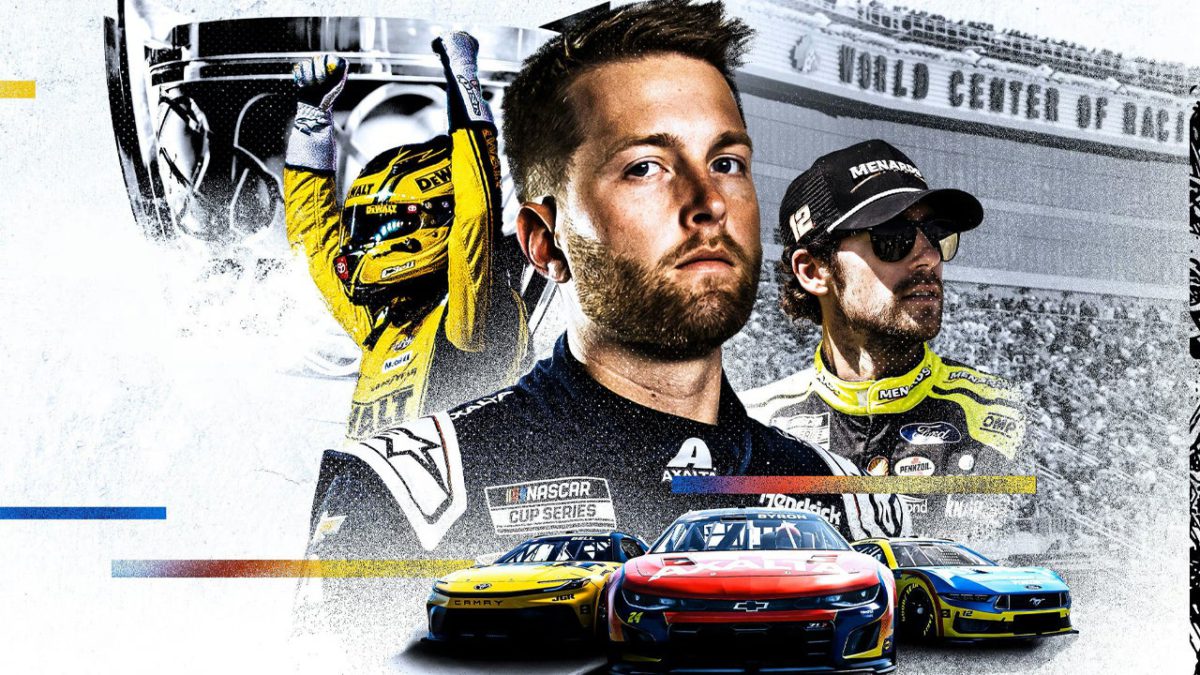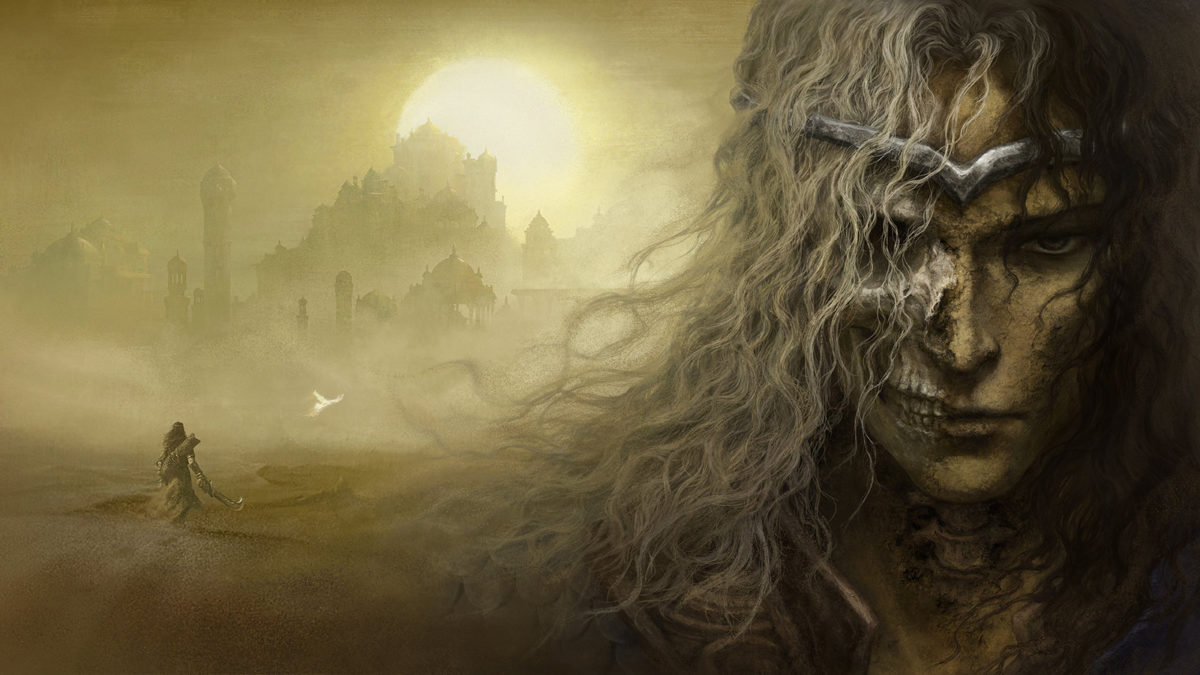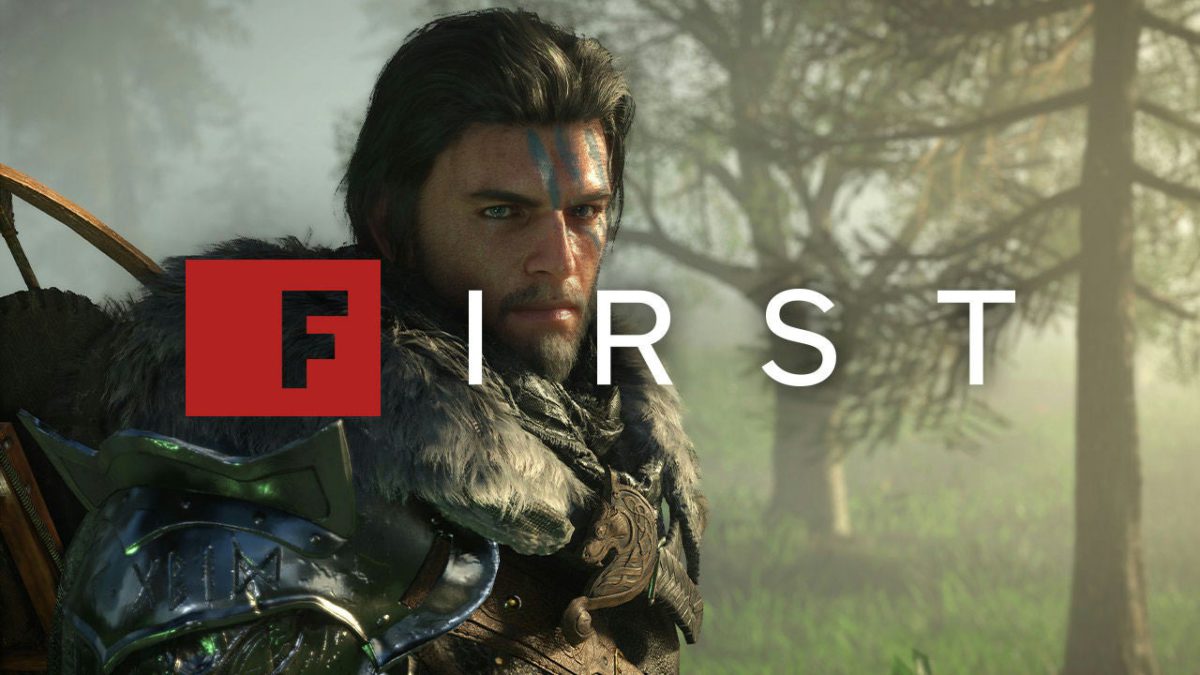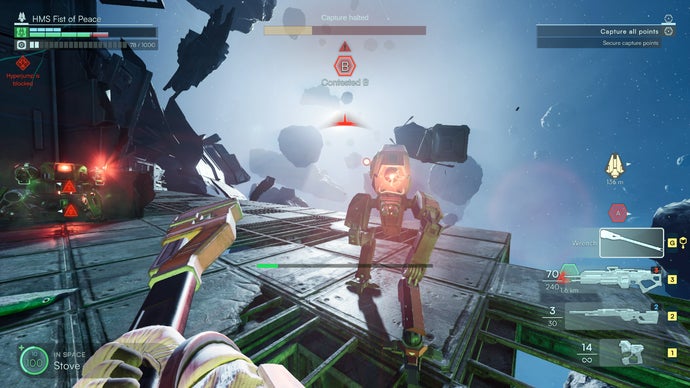
The 2000s are memorable for plenty of peaks. The last truly great salvo of R-rated Hollywood comedies. Finnish mobile phones built sturdy enough to kill a man. Also? NASCAR games. If you know, you know. It’s not a controversial statement to say that, over the last 20 years, no licensed NASCAR game has been able to unseat NASCAR Dirt to Daytona, NASCAR Racing 2003 Season, and NASCAR Thunder 2004 from the podium. Enter NASCAR 25. While several elements of it are roughly hewn and underfeatured – and the multiplayer misses the mark – the moment-to-moment single-player racing it serves up is fast, fierce, and fabulously nuanced. Does it slingshot itself past the very best to ever do it? Not quite. However, it has gotten closer to doing so than any other in the last two decades, and that makes it quite notable.
NASCAR 25 isn’t just the first NASCAR-licensed console game in almost five years, it’s the first ever produced by iRacing – the subscription-based racing simulation of choice for professional race drivers and sim-seat warriors alike. Considering the very foundation of iRacing was built using the source code for the legendary NASCAR Racing 2003 Season, there’s an undeniable element of pedigree at play here. There’s obviously a level of expectation that comes with this sort of heritage but, while it still has plenty of scope for growth and refinement, it’s been nice to see NASCAR 25 succeed in key areas where it counts.
Matched Perfect and Staggered Special
NASCAR 25 is at its very best on the track, rubbing panels at nearly 200 miles per hour. While oval racing isn’t a personal speciality of mine, I do find it massively fascinating just how ruthless it can be – and how different it is to typical circuit racing. As such, NASCAR 25 has me hooked right now.
There isn’t always a consistent racing line in oval racing; depending on the conditions and the track itself, the most efficient way through a bend might be low, somewhere in the middle, or even way up by the wall. You may need to start taking a corner differently to be faster, and I’m finding this necessity to adapt extremely interesting. I’m also particularly attracted to the sort of patience oval racing requires, with events that can unfold over hundreds of laps. Doggedly hanging onto the coattails of a breakaway pack of opponents, dicing with them doorhandle-to-doorhandle, is tense and engaging – but there’s also a part of it that I find almost meditative as I stalk slipstreams lap after lap, waiting for the perfect moment to attempt to lunge and strike.
The reason this all comes together in a meaningfully believable way is really thanks to NASCAR 25’s very impressive and tunable AI, and it’s very much what I crave in a racing game of this type. The core thing I look for constantly is racing that I can play by myself, in my own time, that feels authentic against my skill level. That’s it. I don’t want to be at the mercy of online randos, many of whom are ill disciplined and weave unrealistically across the track. Just sell me the fantasy of being a racing driver. Let’s not kid ourselves: I’m driving pretend race cars that I can pause when I need to pee. I’m not here to take on the world; I just want to enjoy my time. I want to believe I’m in the mix amongst a bunch of bona fide professionals who drive accordingly. NASCAR 25’s AI gets this right.
As a very casual consumer of NASCAR racing from the other side of the planet, my interest has ebbed and flowed depending on the involvement of drivers I have existing familiarity with, like Marcus Ambrose and SVG, so I’m not going to claim I can assure you that the AI always make the right tactical decisions. That said, they really do seem to drive with a lot of credibility. They hold their lines extremely smoothly around corners, and they shrewdly carve through packs of other cars competing for spots, effectively bump drafting and changing lanes. The only thing that undoes them is NASCAR 25’s frankly absurd way of penalising corner cutting, which will literally bring your car to a halt wherever you currently are if it detects a track limit violation. This will result in the AI piling up behind you as they all slam on the anchors to stop. It’s a massive immersion killer when it happens.
AI speed operates on a difficulty slider, meaning I was able to get it dialled in to perfectly match my skill level. The values are arbitrary, but they range between 85 and 105. About 100 was the sweet spot for super speedways for me, and slightly lower on short tracks and road courses.
There are a number of settings available to customise the AI, including their predisposition to losing control, their skill in regaining control after incidents, and their resistance to car-on-car collisions in the first place. I’m currently experimenting with making the AI more susceptible to losing it after a decent whack – and dialling incident frequency way up to make things a little more exciting. It probably hasn’t quite resulted in the turmoil I was anticipating, but I appreciate settings like this. There isn’t one, single way to play NASCAR 25. Keep it stern and serious or let it lean a little more Hollywood? It’s a decision the developers are happy to let us handle.
I Don’t Want You Spoiled, Buck
On the topic of handling, the news is also largely positive. It feels strong and challenging with a wheel, and the laser-scanned track surfaces (which have migrated from iRacing) means the characteristics of circuits with bumpier surfaces come through to have interesting effects on the driving feel from race to race. Cars feel balanced and obedient at high speed, and I was particularly impressed with how approachable NASCAR 25 is on a controller – which is important as a console-oriented game. It’s hard for me to accurately put myself into the mind of an inexperienced or younger racer, but there are also a range of assists available – and the simple tuning slider should be sufficient for anyone not looking to get too lost in the weeds when it comes to minor vehicle adjustments. The handy slider is essentially a bunch of quick tunes you can apply to either tighten everything up (which should make your car quite planted and stable, at the cost of some front end responsiveness) or create something looser (and if I’ve learned anything from Days of Thunder beyond what happens when a load of unwanted lettuce reaches Japan, loose is fast and on the edge of out of control).
One key controller problem so far, however, is a peculiar lack of meaningful rumble – and this creates a disappointing disconnect between what’s happening with my car’s grip on-screen and what I’m feeling through my hands. It just injects an unwanted floaty sensation at times, particularly when you don’t realise your rear tyres are spinning up because there’s no tactile information coming in that that’s happening. It makes playing on the expert level handling settings – where ham-fisted throttle mashing will rotate your car around quick smart – a bit more frustrating than I like. I think it’s also contributing to a skatey feeling on road courses, because I can’t really always feel the edge of the grip.
Information is definitely one of NASCAR 25’s weaknesses, overall. It’s not just the fact that it doesn’t really do a great deal to teach a player the ins-and-outs of, say, oval tactics or road course track limits. It’s also missing useful, basic info, like your opposition’s current qualifying times – which can’t be seen while you’re also out trying to set down a scorching lap. You need to return to pit lane to view where you currently stand in the group. The spotter also has a habit of giving us the wrong info, like noting you have clear space inside or outside when you don’t. I’m very lukewarm on how robotic the spotter sounds, too; being direct and matter-of-fact is all well and good during racing, but being unable to muster any convincing human enthusiasm about winning a race makes him feel like a chatbot – and NASCAR 25 misses out on any meaningful personality as a result.
The presentation of career mode is a bit sterile, too. Your driver is never more than a blank silhouette, and the inability to even select a home state or country of origin is odd. It’s small potatoes, sure, but missing the little things does make it all feel a little more impersonal than I’d want from a custom driver. Cars can be customised using a combination of preset designs and some basic shapes, but the livery system is underdone. A one-button system for syncing your design up with your driver and team gear is handy, but simple stuff like flipping the design from one side of a car to the other hasn’t been implemented. You also can’t apply custom shapes to liveries you want to use online, which is an annoying restriction we don’t typically face in other racing games.
I did enjoy the evolution of the custom racing operation and garage backdrop, which is quite cool as you progress up through the four series (and you can compete in up to two series at once), but this first effort is a bit vanilla compared to other career modes in the official motorsport sim space, like F1 or WRC. There’s a basic economy here, where you need to monitor an overall budget and manage repairs between races with a secondary resource called ‘work points’, but I did find myself ploughing through it between races without too much thought.
While I’ve established multiplayer is not my natural environment, it’s not a particularly strong component of NASCAR 25 either way, which is a tad surprising given the sheer volume of online racing experience the iRacing team has. NASCAR 25’s multiplayer is simply a basic lobby system of random races, and there are no scheduled races or special events. It plays just as smooth and reliably as the single-player – even in races against over two dozen online opponents – which is commendable. It just feels listless.
















 *:
*:
